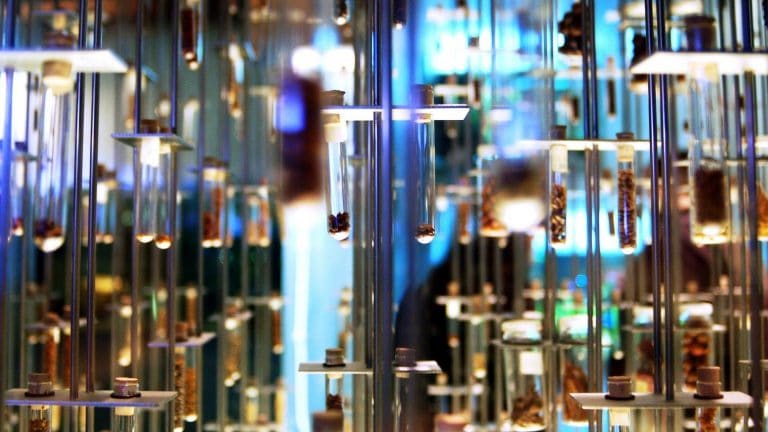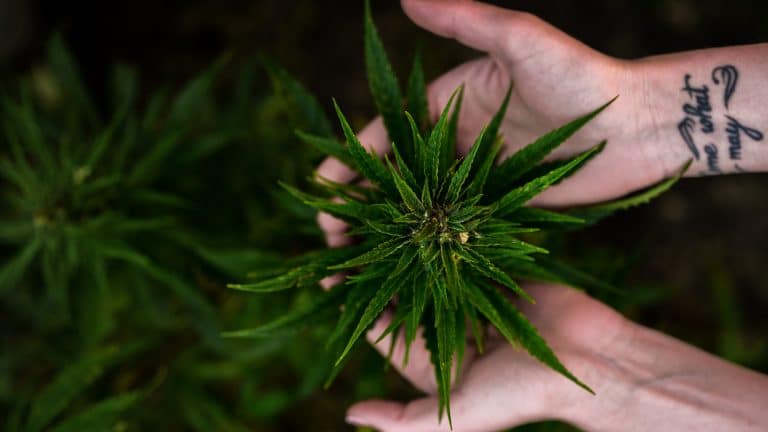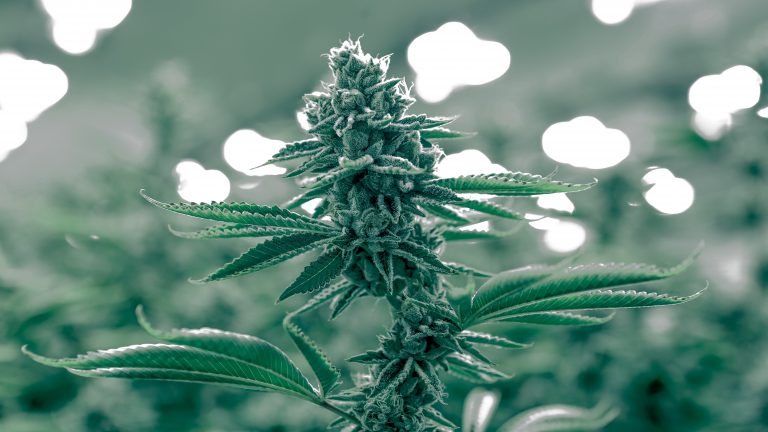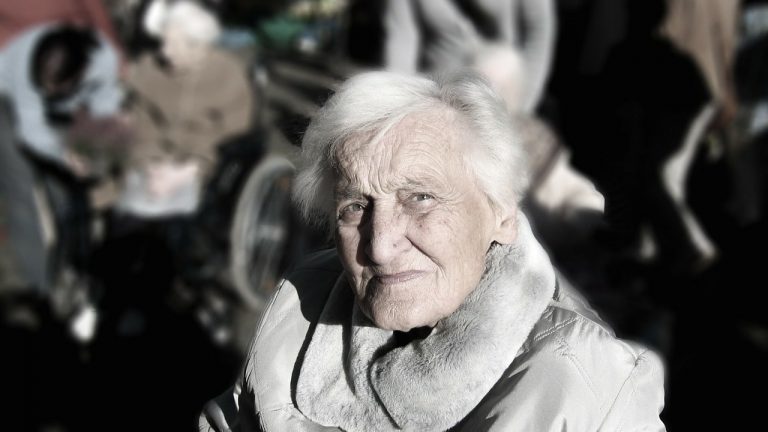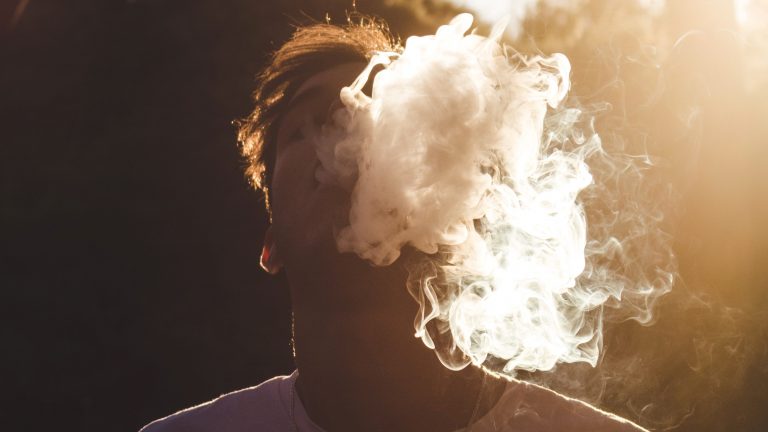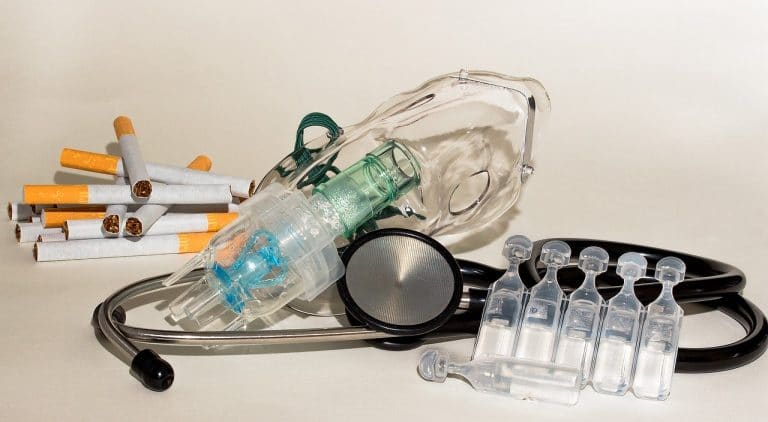45 Absolutely Astonishing Beauty Industry Statistics
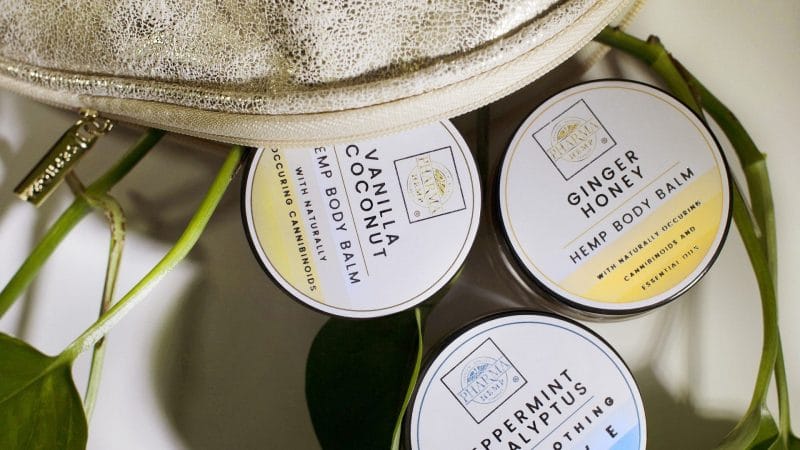
Beauty is a concept with an ever-changing definition. Today, as society evolves, the cosmetics industry must keep up to date with the latest beauty industry statistics and latest trends.
And, it isn’t easy. The beauty industry is as fast-growing and dynamic as the definition of the concept itself. With new products and services appearing on the market daily, it can be difficult to keep track of all developments.
Whether you are planning to turn an idea into a profitable business or you are just a consumer learning more about the cosmetics industry, these facts will help you understand it better and learn more about what’s new in the world of beauty.
Top Ten Beauty Industry Statistics for 2022
- The global cosmetics industry should be worth $438.38 billion by 2026.
- According to the estimations, the global beauty market will have a decline of 20%–30% due to the pandemic.
- Women in the US spend around $3,756 on cosmetics annually.
- 17% of women stopped wearing makeup completely on account of the coronavirus.
- 30% of the beauty industry market was closed due to the global pandemic
- Skin care products have seen a growth in sales by a whopping 606.4% for hand masks.
- Beauty therapy will experience the highest growth of 20% by 2024 in Australia.
- 48% of Millennials say they would purchase products with CBD oil for skin care.
- 82% of women believe that social media drives trends.
- $15 billion were expected to be spent on global influencer marketing by 2022.
Let’s take a close look at the cosmetology industry.
How Much Is the Beauty Industry Worth in 2022?
It is believed that Egyptians invented makeup since they were the first to use cosmetics to create dramatic looks, while today’s beauty industry deals with all sorts of products, from eye makeup to hair and skin products. But how big is this industry, and what is its worth?
1. According to the estimations, the global beauty market had a decline of 20%–30% due to the pandemic.
(McKinsey & Company)
The numbers are expected to be even higher in the US if the pandemic doesn’t slow down. In fact, the beauty industry statistics reveal that the decline could go up by 35%.
2. The growth rate of the global cosmetics market was the lowest in 2009.
(Statista) (Investopedia)
Even the cosmetics industry took a hit in the 2009 global recession, but not as much as other sectors. Experts consider the beauty industry to be one of the few recession-proof industries.
3. The global cosmetics industry should be worth $438.38 billion by 2026.
(GlobeNewswire) (Statista)
How much was the cosmetic industry worth in 2020? Estimations show that beauty and personal care products’ US market value was over $93 billion.
4. Women in the US spend around $3,756 on their appearance annually.
(Byrdie)
This translates to around $225,360 through their entire lifetime. Number one expense is facials, followed by haircut, makeup, manicure, and pedicure. Essentially, women like beautifying rituals.
Men, on the other hand, spend less —$175,680 during their lifetime on health and beauty products. They are most inclined to spend their money on facial moisturizers, while gyms come second, hand creams third, and shaving products rank fourth.
5. The global perfume market alone was worth $30.6 billion in 2019.
(GlobeNewswire)
Cosmetic industry statistics worldwide estimate the market value to reach $46.1 billion by 2023, at a CAGR growth rate of 10.8%.
6. There are almost 1 million Americans employed in the service segments of the cosmetics industry.
(FranchiseHelp)
The number of employees in the service segment is expected to increase by 10% for barbers, hairdressers, cosmetologists, and by almost 22% for massage therapists by 2024.
7. Hair care industry has the biggest market share of 24%.
(FranchiseHelp)
We love spending (good) money on haircuts and hair products. The industry is neck in neck with skin care for it contributes with 23.7% of the market share. Cosmetics is far behind with 14.6%.
Beauty Industry and Coronavirus Impact
The global pandemic, the “new normal” rules, the lockdowns, and the social distancing had a big impact on the beauty industry. How did it affect the global market and which products had an immense increase, i.e., decrease in sales and demands?
8. 30% of the beauty industry market was closed due to the global pandemic, based on the beauty industry report.
(McKinsey & Company)
Before the global pandemic, 85% of people used to buy various beauty products in the stores. Unfortunately, the loss in in-store sales was not offset by online sales.
With the stores being shut down due to the lockdown, some stores will reopen within a year, while others will never recover from this impact.
9. 17% of women stopped wearing makeup completely on account of the coronavirus.
(Premise)
We might see grave changes in the beauty industry statistics due to the new pandemic and its social distancing rules. Based on one survey, 66% of women admit wearing less makeup than before the pandemic outbreak, while only 16% of women started wearing even more makeup amidst the pandemic.
On that note, when asked about the reasons, 39% of women said they stopped wearing makeup because of the mask-wearing policies, remote working (31%), and social distancing (11%).
The product that was used the least was lip balm. Its use plummeted by 48%.
10. Beauty products sales have dropped down by 36%.
(Cosmetics & Toiletries)
If we compare the global cosmetics market in 2019 with the one in 2020, we’ll notice a big change in the sales and the overall buying patterns. There was a decline of 36% in sales of beauty products (compared to 2019), while online sales recorded an increase in sales by 90%.
11. The sales of skin care products with blue light protection went up by 170%.
(WebMD) (WWD)
Blue light is the light that comes out of your screen and other electronic devices that is often associated with eye problems like blurry vision, eye dryness, and cataracts. Long exposure to blue light can also lead to pigmentation, swelling, redness, and other skin problems.
Although cosmetics with the blue light protection was already a trend in 2019, cosmetic industry statistics from 2020 imply that its sales went up due to the lockdown and the switch to remote work.
12. The sales of hair clippers skyrocketed by 362.6% during the pandemic.
(Miami Herald) (Statista)
It seems that hair products experienced a renaissance during the lockdown, given that there was an immense growth in its sales in the US, starting with hair clippers that went up by 362.6%, hair developers (190.6%), root touch-up (182.3%), hair bleach (54.9%), and hair mask (50.2%).
There was a growth of 23% in Walmart hair color sales as well.
13. Beauty industry statistics from 2020 show us that lipstick sales were down by 15%, compared to eye makeup sales that went up by 204%.
(Business Insider)
There was a drop in Amazon sales of lipsticks, while eye makeup sales grew by an astonishing 204%. This comes as no surprise, given that the wearing of masks became mandatory in all the countries in the world. Lipstick prices even dropped by 28%.
14. Skincare products have seen a growth in sales by a whopping 606.4% for hand masks.
(Statista)
Coronavirus was responsible for the immense growth of sales of skincare products, starting from hand masks (growth by 606.4%), hand soaps (438.4%), and body wipes (378.5%).
Skin Care Industry Statistics
What about the skincare market? What is its impact on the larger scale?
15. The global skincare market is worth $145.3 billion.
(GlobeNewswire)
Judging by the statistics, the market should rise to $185.5 billion by 2027, with a CAGR growth rate of 3.6%.
16. Skincare accounts for 40% of the global cosmetic market.
(Common Thread Collective)
Considering that more and more people are becoming aware of the harmful effects of the sun on the skin, the skincare industry has the potential to grow at a steady rate of 3.5% in the near future due to the popularity of the anti-aging and sun protection products.
17. UK is the third leading country in Europe by cosmetics consumers, based on the UK beauty industry statistics from 2019.
(Alioze) (Statista)
Brits spent £32.5 million ($44.43 million) on cosmetic products. Most money was spent on toiletries (25.1%), skin care products (22.3%), fragrances (19%), hair care (17.9%), and color cosmetics (15.6%).
That being said, Germany and France are the leading countries by cosmetic consumers (in Europe).
18. Beauty therapy sector will experience the highest growth of 20% by 2024 in Australia.
(AISC)
According to the beauty industry statistics, in 2019, Australia had a major increase in employed beauty therapists. Although the number decreased by 50% in 2020, it’s still expected to grow by 20% by 2024.
19. About 8 million Americans received botox injections in 2019.
(Insight Slice) (Plastic Surgery) (ABC News)
The global facial rejuvenation market was worth $19 billion in 2019, and it’s estimated that this market will have a CAGR growth of 11% by 2030.
As proof that this is an ever-rising industry, 64% of plastic surgeons in the US reported increased consultations with patients.
The most commonly required operations were botulinum toxin type A (Botox), breast augmentation, soft tissue fillers, and liposuction.
Perfume & Hair Care Industry Statistics
How big are the global hair care and fragrance markets?
20. Elizabeth Taylor was the first celebrity to create her own line of perfume.
(Elizabeth Taylor) (Statista)
One of the best-selling women’s perfumes in the US, Elizabeth Taylor White Diamonds, generated almost $23 million in sales even after her death.
21. The global fragrance market reached $43.6 billion in 2020.
(Business Wire)
It’s estimated that it will reach $54.6 billion by 2027. On the other hand, according to the forecasts and the beauty industry statistics, the fragrance market in China will have a 6% CAGR growth by 2027, followed by Japan and Canada with 0.9%, i.e., 2.4% CAGR growth.
22. The size of the global hair care market is expected to grow by 5.2% by 2026.
(GlobeNewswire)
Revenue from the sale of hair products on the US market is expected to reach $111.98 billion by 2026. There is an increasing demand for hair care products, and one of the leading trends in the hair care market are products for hair growth.
Cannabis and the Cosmetic Industry Statistics
What kind of role does cannabis play in the beauty industry, and how many brands produce CBD infused products?
23. CBD products that contain less than 0.2% of THC are legal in the UK.
(Who What Wear)
CBD products, including skincare cosmetics that contain no more than 15% of CBD are completely legal, UK cosmetic industry statistics reveal.
24. North America holds first place in the global CBD skincare market.
(FMI)
It’s estimated that the CBD skin care market will reach a growth of a staggering 26% CAGR in the period of 2020 and 2030, with North America leading the way.
Given that CBD oil is one of the most demanding products, it’s believed that it will constitute 30% of the overall CBD skincare industry.
25. 48% of Millennials say they would purchase products with CBD oil for skin care.
(Linkage Research and Consulting)
Some of the attributes of CBD include anti-inflammatory and analgesic properties, beauty industry facts tell us, which means it can act as a pain-killer and treat dry skin, psoriasis, and eczema. Basically, most types of inflammation.
26. Acne is the most common skin condition, and research suggests it is CBD treatable.
(Medical News Today)
Studies show that CBD could be an effective treatment for acne. CBD can control inflammation and oil production, two of the reasons why acne develops. Going by this, it is clear that cannabis has a bright future as CBD skin care products can be made to suit all skin types, cosmetics industry statistics indicate.
27. Lip balms containing CBD and THC are introduced on the market.
(VERTLY)
Vertly lip balms contain less than 0.3% THC and only use CBD from industrial hemp. This product provides all the benefits of cannabis oil, without getting you high. Consumers say that CBD lip balms hydrate the lips without feeling sticky or gloppy.
28. Milk Makeup went 100% vegan and subbed beeswax with CBD oil.
(Milk Makeup)
Vegan beauty industry statistics have a new data entry. Milk Makeup, one of the more popular cosmetics brands among Gen Y shoppers, introduced Kush Mascara, a product infused with cannabis oil. The CBD in the mascara creates more volume and also prevents fallout, say consumers who follow beauty trends.
29. 18% of Millennials purchase hair care products that contain CBD.
(Linkage Research and Consulting)
Almost a third of Generation Y say that they purchased hair and skin products that are organic or plant-based, while 37% say they would like to buy hair care products that contain high-quality CBD oil, demonstrating another connection between CBD and the beauty industry.
30. Each bottle of American Shaman CBD Body Lotion contains 15mg of CBD.
(CBD American Shaman)
Due to its calming and soothing effects, cannabis oil is widely used to relieve chronic pain within an hour after application.
Biggest Beauty Industry Trends at the Moment
Trends in the beauty industry change constantly, so make sure you’re in sync with the latest trends.
31. Anti-pollution beauty products are in high demand.
(React4life) (GlobeNewswire)
Anti-pollution makeup has seen its growth on the market, and it is probably one of the most consistent beauty industry trends from 2020 that will continue to grow in the future since its CAGR is predicted to grow by 5% by 2025.
What’s more, based on the anti-pollution skincare products market report from 2020, about 90% of the population worldwide is exposed to worrying levels of air pollution, so many skincare products have an “anti-pollution” label. In other words, they have ingredients like green tea, vitamin C, and matcha.
32. Cosmetic industry trends imply that eye makeup will replace lipstick.
(USA Today) (Business Insider)
The global pandemic has caused many changes in the beauty industry. First of all, there was a huge drop in lipstick sales, given that the face masks became mandatory, and many women stopped wearing them. Based on one survey, only 46% of women wore it amid the pandemic, compared to 86% wearing it before the pandemic.
On the other hand, the eye makeup market has flourished with a 204% growth in sales.
33. Skinimalism was be the most popular trend in 2021.
(My Imperfect Life) (Shape)
If you never heard of the term “skinimalism,” here’s a short explanation. Cosmetic industry trends define skinimalism as a trend of using minimum makeup and relying more on your natural look. It also implies using less time on makeup, spending less money on the products, and being more environmentally friendly.
34. CBD beauty products are taking the main stage.
(Cosmetics Design)
Watch out for the cannabis beauty products that are slowly making an entrance into the beauty industry’s world as many popular brands started launching their CBD skincare solutions. So, it’s safe to say that CBD skincare products (CBD soap bars, bath bombs, lotions, creams, shampoo etc.) are part of substantial cosmetic industry growth.
For example, Avon launched three CBD skin care products, Envy created CBD Face Masks, Kush Queen released Soaked CBD Shower Gel, and Cannuka has its Calming Eye Balm. Colgate is also one of the famous brands that included CBD products in their CBD lip balms sales.
35. Microbiome skincare is becoming the new mainstream.
(Byrdie) (Who What Wear)
Human skin contains various viruses, bacteria, and fungi that make the skin microbiota. Keeping them in balance will benefit the skin’s overall health. Microbiome skincare products can, among other things, be used for dealing with skin infections and protecting the skin from environmental damage.
36. What are the current trends in the beauty industry? Masks are inspiring a new range of deep cleansing products and lipsticks.
(Emilie Heathe) (BBC News) (Elle)
How will the global pandemic affect beauty trends? Well, for one thing, coronavirus is responsible for maskne—skin irritations caused by masks that usually appear around the mouth. What causes them is the acne mechanica, dirty masks, and contact dermatitis.
Secondly, stay-on, mask-proof lipsticks are all the rage right now.
37. Aveda is following cosmetics industry trends and is launching 100% vegan products.
(Harpers Bazaar)
The popular cosmetics company decided to make a praiseworthy change in 2021 by reformulating its products to be 100% vegan. In other words, they removed ingredients like beeswax and honey from their beauty products.
38. Unilever is the first company in the UK that adopted the Halo Code.
(Dazed Digital) (Stylist)
Our beauty industry statistics go beyond appearance. Even though hair discrimination has been illegal in the UK for a while now, statistics show that 58% of Black students are still discriminated against in schools due to their hair. This issue was the reason for Halo Collective’s creation, i.e., the Halo Code that should be incorporated in schools and workplaces to prevent hair discrimination and support natural hairstyles.
Dove’s parent company, Unilever, was the first one to adopt the Halo Code.
39. Makeup statistics reveal 51% of consumers want to see images that are not photo-shopped.
(Forbes) (Octane Ai)
Accepting real beauty in all shapes and sizes is one of the emerging trends. Moreover, based on the latest Nosto’s beauty and skincare report, 74% of consumers would choose a brand that incorporates customer reviews on their page. More than half of them would rather see natural images that were not edited in photoshop.
40. The beauty industry produces 120 billion units of packaging a year (mostly unrecyclable).
(Bloomberg)
However, consumers are demanding sustainability in accordance with the ongoing green trends, and beauty brands are up to the challenge. P&G’s Olay introduced a refillable product that sold at 1.26 million units and was named the No.1 new skincare product.
Beauty Industry Analysis: the Social Media
What’s the connection between the beauty industry and social media?
41. 82% of women believe that social media is responsible for the ongoing trends.
(FranchiseHelp) (Netbase Quid)
The main beauty industry’s target group is women that often use social media channels to find out more about the product they are about to buy. They also use social media to exchange information about the particular product with friends and family members or to read the opinions of celebrities and trendsetters.
42. 4 in 5 brands use Instagram for their campaigns, statistics about wearing makeup reveal.
(Business Insider)
79% of brands reported using Instagram as their main source for influencer campaigns, followed by 46% of brands that use Facebook, 36% that use YouTube, 24% that use Twitter, and 12% that use LinkedIn.
43. $15 billion was expected to be spent on global influencer marketing by 2022.
(Business Insider)
Is the beauty industry competitive? Highly, with influencers and micro-influencers at its core. What’s more, the global pandemic hasn’t changed the situation, with 96% of consumers from the US and the UK reporting having the same engagement with the influencers as before. However, there was a decrease in the influencer marketing budget by 41%.
44. Huda Beauty is the most popular beauty brand on Instagram.
(Social Bakers) (Beauty Packaging)
Huda Beauty has 48.1 million followers on Instagram. Cosmetic industry statistics reveal that its owner, Huda Kattan is the influencer with the highest earnings-$150k per Instagram post (sponsored). It also has 27 million hashtag mentions.
45. L’Oreal Paris launched the first digital make-up line — Signature Faces.
(Global Cosmetics News)
L’Oreal Paris embraced digitalization with grace by creating the first digital makeup line used with the AR tech. In a nutshell, you can try different digital makeup styles while using social media video calls and other video chat services.
Bottom Line
The beauty industry is a booming business that is estimated to grow at an even higher rate than ever before. Naturally, this is the result of people wanting to look good and be at their best.
However, beauty industry statistics show that this is also due to cosmetic companies embracing new trends in the industry at an incredibly fast pace, such as the incorporation of CBD into cosmetic products or more eco-friendly practices, and coronavirus leaving its mark. Who knows what the beauty industry will look like in the future. Any ideas?
